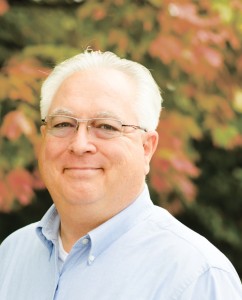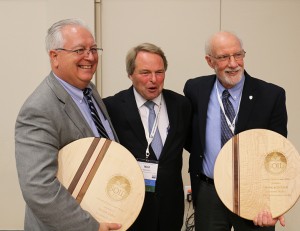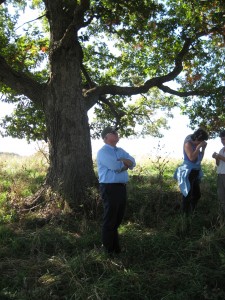Duane Sand: A career of unlocking conservation possibilities
By INHF on December 16, 2015 in Blog

Thirty-two years ago, Duane Sand asked me to help him with some summer communication about a concept he hoped would become part of the 1985 Farm Bill. It would give farmers an incentive to put their most erosive acres into grassland cover for ten years. Today you know it as CRP – the Conservation Reserve Program.
In his quiet, behind-the-scenes way, Duane has always been on the forefront of fresh concepts to protect land and water. He would be the last one to draw attention to his 40-year conservation career. But I believe his story can help to inspire a new generation of conservation thinkers who might follow their own paths of innovation for the good of the cause.
I think of Duane's brain as The Place Where Data Becomes Ideas. He tirelessly absorbs facts and proposals from places the rest of us find boring. He runs his highlighter over government documents, poll details, policy research, agency budgets. Then he connects dots. Notices opportunities. Watches trends. Identifies potential partners. He endlessly ponders, “What if…” – looking for solutions that just might give us cleaner water and healthier land.
How do you get a job doing that? With an entrepreneurial spirit, Duane created the job himself.
In 1981, just two years after Iowa Natural Heritage Foundation was formed, Duane offered to create a soil and water program for INHF — and said he'd find the funding to support it. With great courage, he left his job at the Linn County Soil and Water Conservation District and began seeking grant support for great ideas.

That was his model of working for the next three decades: matching fresh ideas with foundations who believed in the need, the ideas and in Duane's capability. This way of working honed Duane's foresight and his wide range of collaborating funders, partners and conservation coalitions at the local and national levels.
Duane's first efforts convinced some major ag companies to show crop residue rather than bare soil in their ads – an important visual support for the emerging concepts of reduced tillage and no-till farming.
His consistent efforts have led to varied and impressive results on the land and in our lives. He'd be the first to say he didn't do any of these alone — but if you follow the threads, you'll find Duane at the heart of these conservation actions with his ideas, strategies or funding sources:
- On-farm demonstrations of reduced tillage, fertilizer or pesticide use
- CRP, WRP, sodbuster and swampbuster
- Helping landowners close agricultural drainage wells (conduits for groundwater contamination)
- Making Iowa's Clean Water State Revolving Loan Fund available to farmers and urban users
- Passage of the Iowa Conservation Contribution Tax Credit for donations of land for conservation
- Research into sustainable state conservation funding and creation of the Iowa's Water and Land Legacy (IWILL) legislation
- Securing Source Water Protection funding for drinking water utilities
- Helping to organize the Iowa Agriculture Mitigation Bank to help farmers comply with Swampbuster legislation
Duane has played an invaluable role in shaping INHF into the organization it is today. He gave us a unique niche in outreach regarding state environmental appropriations, federal farm policy and water quality protection. He created and coordinated diverse coalitions for policy efforts and watershed projects. On behalf of INHF, he served on the boards of the Iowa Environmental Council, the National Sustainable Agriculture Coalition, and the State Soil Conservation Committee. INHF was proud to share his knowledge and strategic brain with the conservation community.
For the past two years as INHF's Floodplain Outreach Coordinator, Duane has focused on developing and sharing first-in-the-nation technology that supports better floodplain management. He found ways to take this modeling beyond city use, making available to rural landowners and land managers new maps that estimate future flood frequency and damage. With this knowledge, they can make management choices that hold soil in place and improve water quality while reducing their economic risks.
Duane recently retired from full-time employment with INHF, but he has contracted to continue his floodplain outreach on a part-time basis in the months ahead. This rounds out a wonderful association with INHF that has lasted nearly 34 years.
I'm glad to see Duane and his wife Marilyn enjoy more leisure time. But Duane is Duane, and the ideas and drive are still strong. I see him blossoming with a new freedom and desire to speak with people of faith about our conservation responsibilities: our need to act now out of respect for our Creator, respect for all creatures who share our world, and respect for future generations.
If you're still reading this, and if you'd like to look back on your work for conservation with the kind of satisfaction that Duane enjoys, I hope you'll take the inspiration of this story to heart.
How can you follow your own unique talents and drive?
How can you find like-minded people and step up your commitment?
Where can you find the opportunities and courage to do what you feel called to do?
–Anita O'Gara is glad to be a long-time co-worker of Duane Sand – and his little sister
